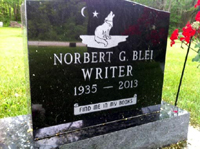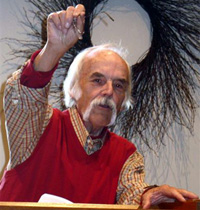
Shadows of the “L” tracks and CTA platforms overhead cover Wabash Avenue in the Loop on Wednesday. Many of Chicago’s downtown elevated tracks were built around the turn of the last century. (Brian Cassella/Chicago Tribune )
Sidewalks
I have had many walks in this city but none as weirdly wonderful as one last week.
I could have walked any number of city streets but chose one that carried the wounds inflicted by recent frustration and anger.
I have watched protesters on many streets over the last weeks and there was a sense of pain and urgency among the marchers. There was time given to shouting but there was little time in these journeys for quiet observation.
I needed to walk alone and chose Wabash Avenue. I needed memories in the face of an uncertain future. Wabash is not the street on which I grew up and spent most of my life. That street is tucked sedately inside Old Town. But Wabash has been a street I have known well.
The past, its images and sounds, can, even in the face of the world’s many troubles, give comfort. Pick a street you have known and walked and walk it now. No matter how savaged, it can evoke memories for you and maybe hope.
I believe this because when I start to walk I hear Jim Morrison at the corner of Wabash and Congress, thrown back nearly 50 years to a June 14, 1969, concert at the Auditorium Theatre where I saw Morrison and the Doors perform. He wrapped himself in his microphone cord and rolled across the stage as he sang “Light My Fire.”
All along this walk, the past came crashing into the all too real present.
It was a Friday, the weather hot and heavy, even in the shade cast by the “L” tracks overhead, which have been hanging above this street since I was a child, holding it in darkness and shadows on even the most sun-splashed days. I recall that writer Nelson Algren called the “L” “the city’s rusty heart” but think of this city now as slashed and burned.
I know that many of the business on Wabash will bounce back but how high I can only guess. Other businesses on other streets will not be as fortunate. They are already dead and gone.
Central Camera Co. here is badly damaged, but its neon sign remains, reminding people that it has been here since 1899. The store vows rebirth, telling its many Facebook followers: “We will rebuild, and we look forward to seeing all of your faces once we reopen.”
Then comes a voice and it is the voice of Mike Royko, who understood this city as well as any and who wrote, in the wake of the assassination of Dr. Martin Luther King, Jr. in April 1968, and the ensuing fires that leveled much of the West Side, “Hypocrites all over this country would kneel every Sunday morning and mouth messages to Jesus Christ. Then they would come out and tell each other, after reading the papers, that somebody should string up King, who was living Christianity like few Americans ever have.”
I can see Mike too. It is the early 1980s and he and I are sitting inside Miller’s Pub and we are with Bill Veeck, who twice owned the White Sox. I did not say a word this night as the two older men talked and drank and laughed and smoked. I remember that is was Veeck who integrated the American League when he owned the Cleveland Indians and hired and played Larry Doby in 1947 and, in time, also put to work baseball’s first black public relations man, trainer and scout.
Soon, the Palmer House is offering me the knowledge that inside its locked doors is its Palmer House Museum, fitting because it is Chicago’s oldest (1873) hotel and the first so-called fireproof hotel in the U.S.
Walking, I remembered too that Veeck claimed to read a book a day and now I am passing on the other side of the street the site of what was once Kroch’s & Brentano’s. It was a paper-on-ink playground, 31/2 floors and the centerpiece of a nationwide chain of bookstores. But it died in 1995, bankruptcy the cause, but hope comes in the many independent bookstores that dot the area, most struggling for the moment but determined to carry on, and when that happens I will buy books at each.
To the west are the windows of Macy’s, all covered in boards. This was once the flagship store of Marshall Field & Co. I remember the picketing and boycott threats that took place when Macy’s purchased Field’s in 2005. That always confounded me. The State Street building was not being torn down. It and the other Field’s stores were not being converted into discount centers. I have a certain historical stake in this matter. My father, Herman Kogan, and Lloyd Wendt wrote the definitive history of the company in their 1952 “Give the Lady What She Wants,” and so I was from my earliest years imbued with the store’s history and the meaning of it all and the memories are too vast to calculate.
The city is, I remind myself, an organic thing, ever-changing, remolding itself in the visions of developers and architects and politicians. And now perhaps the people will get in on the game.
Just before Randolph, I remember the Blackhawk and its fine food and know that older folks walking here might remember its earlier years when it hosted all the big bands/big names of a bygone time: Benny Goodman, Kay Kyser, Glenn Miller, Bing Crosby and Louis Prima and Les Brown.
At Randolph I can see to the east the Prudential Building that now houses the offices of the Tribune and in a couple of more blocks I can see where the Tribune once was, in a Tower now turning slowly into million-dollar condominiums.
Across the river I see not what is there now but what was once there, the squat building that announced its resident in large letters facing south: CHICAGO SUN-TIMES.
I worked for both papers. The Daily News died in 1978 and the Sun-Times lives in the West Loop. The tall building that now sits on the spot has new lettering: T-R-U-M-P.
Ernest Hemingway, a child of Oak Park, once wrote, “The world breaks everyone and afterward many are strong at the broken places. But those that will not break it kills. It kills the very good and the very gentle and the very brave impartially. If you are none of these you can be sure it will kill you too but there will be no special hurry.”
Chicago now has many broken places, some healing faster than others. Will we collectively be stronger at those broken places? I wonder and hope.
The bridge was raised. My route was blocked. This walk was over. The river flowed.



























































Leave a comment